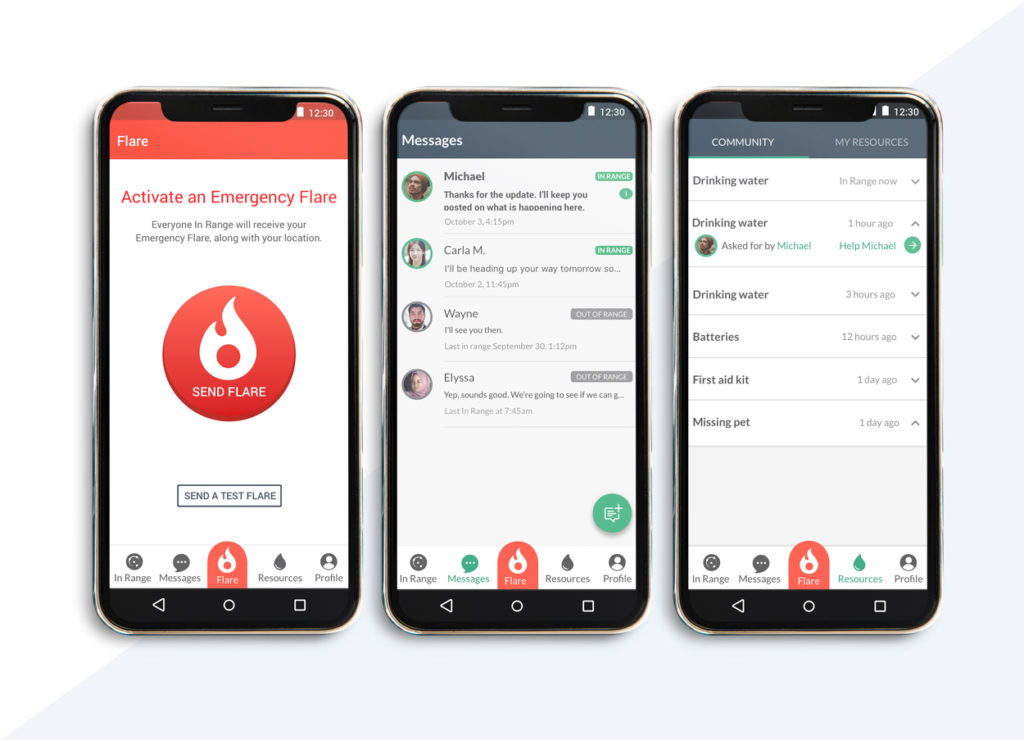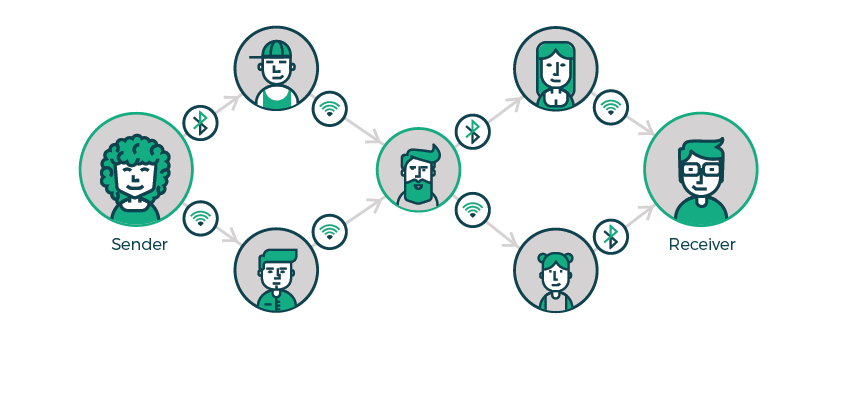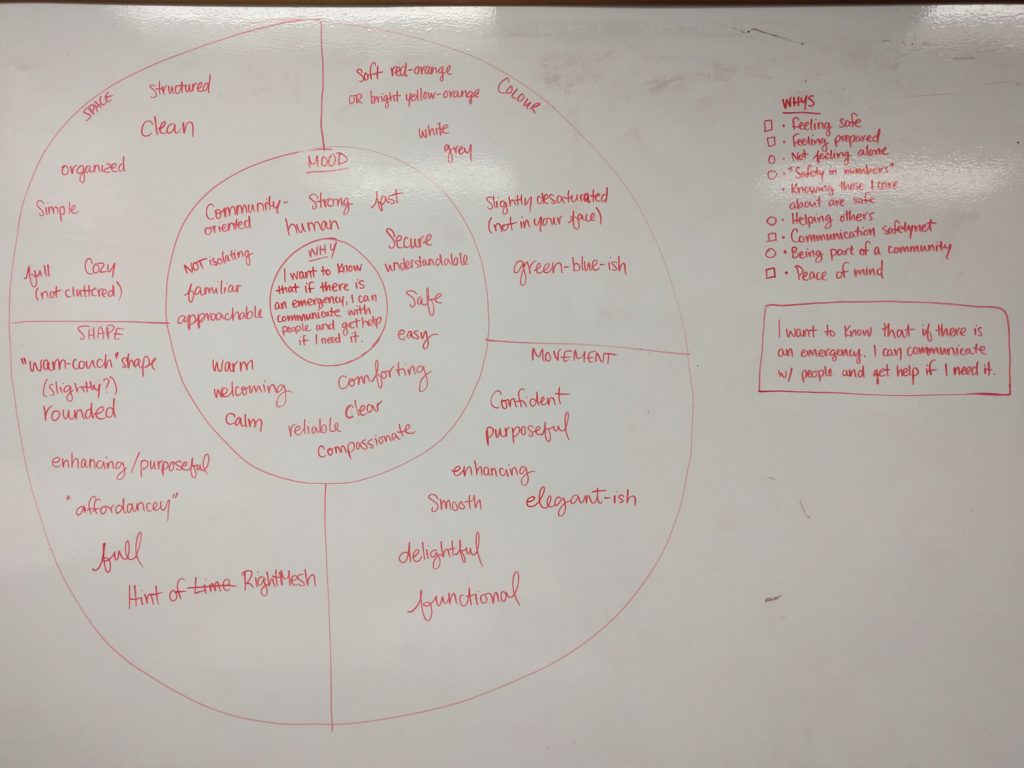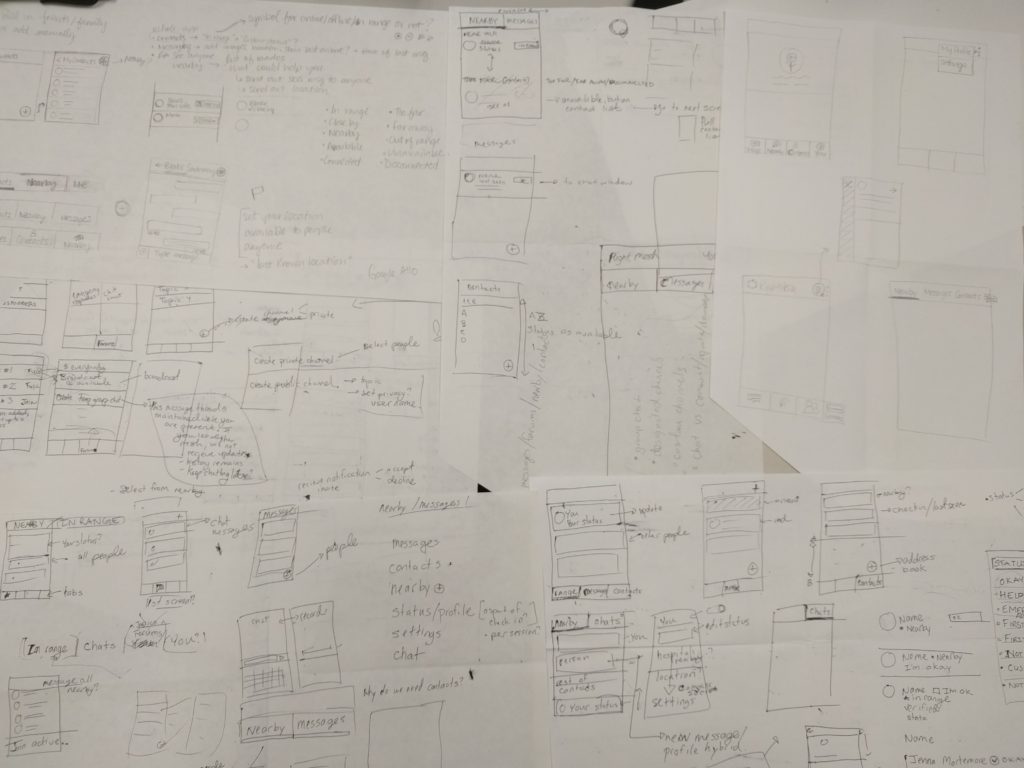
Flare App
Offline emergency communication using RightMesh platform
OVERVIEW
Flare is an app that we designed, and was developed using RightMesh technology, a mobile mesh networking software that uses blockchain technology and allows Android devices to connect via Bluetooth and Wifi without the need for mobile infrastructure or internet connectivity.
Unfortunately, Flare was a conceptual project only that launched internally, but never publicly. The technology itself being developed never fully came to fruition as it faced many obstacles, and being that Flare was a potentially life-saving app, our team felt it irresponsible to launch without the tech itself working reliably.
MY ROLE
UX Researcher & UI Designer, Left Technologies Inc.
The app was designed by myself and another Product Designer on the RightMesh team. We began the project in late 2017, when there had been a huge earthquake in Mexico, when the US was still reeling from damage of multiple hurricanes, and there were huge wildfires in Northern BC. Using RightMesh, we felt that an offline communication app could really help people in those situations.
The concept behind RightMesh is, however, incredibly innovative. Every user becomes part of the mesh network, and relies on a fairly dense assembly of users in order to send messages. So an emergency communication app in the aftermath of say, a hurricane in a populated centre, was a good use case and why we set out to design Flare in the first place.
Here is how it works:

A great need for offline communication in an emergency
It was this need that drove our efforts in designing Flare. By interviewing experts in emergency response and people who had survived national disasters, attending an emergency preparedness workshop, and even attending a Search and Rescue rescue training, we knew that a need for communication is a first and foremost need in the aftermath of any disaster.
In 2017, when we set out to design Flare, Hurricane Irma had just devastated Florida and parts of the Caribbean. British Columbia was dealing with extreme wildfires, and Mexico had just been hit with an 8.1 magnitude earthquake.
In all of these disasters, one thing was consistent: cell towers and power goes down, and people need help or to reach out to family.
We learned that it is common in the event of an emergency that people really come together to help each other. A family that is trapped inside their house during a flood needs to be able to contact anyone who can potentially help them. A family who has just been through an earthquake needs to be able to reach out to their other family or friends to let them know they are safe. This has been shown on Facebook and other social media for years.

Competitors in this space at the time
We looked at what apps were being used in emergency communication, and what features were most common. Prior to Hurricane Irma, a “walkie-talkie” app called Zello had millions of downloads because it claimed that it allowed communication even if cell towers were down.
Additionally, there were a couple of other popular mesh networking apps, such as FireChat and Bridgefy.
These are the products that we looked at in our competitive research:
- FireChat – A direct competitor that uses a mobile mesh network like RightMesh
- Zello – A walkie-talkie app that allows quick broadcasting to big groups, but doesn’t use an offline network
- Bridgefy – Another direct competitor, which allows offline communication
- Helpers (formerly Musketeer) – Using traditional connectivity, Helpers allows a user to broadcast a “beacon” for help to everyone in their vicinity, potentially getting help fast
- goTenna – A physical hardware that a user can attach to their keychain or backpack, to allow a user, such as a lost hiker, to broadcast a “beacon” for help of their location.
Sharing of survival supplies and information also vital
Communication was our first and primary user goal. We also learned that people come together to help others and share supplies and resources in times of natural disaster. People tend to be alarmingly unprepared for emergencies, and the exchange and sharing of supplies and information are vital to survival.
With that, we wanted Flare to have these features:
- A simple messenger that allows people to get help in an emergency by messaging both strangers or attempt to reach out to loved ones.
- Show In Range and Out of Range users who could be strangers or your own contacts, since RightMesh relies on users being relatively close to one another to effectively work
- The ability to add contacts from your phone
- A Resource sharing feature that allows a user to list Resources they have and Resources they need
- The ability to send a “Flare”, an emergency beacon that shares your location and lets everyone in range that you require immediate help.
We did a feature prioritization exercise, and a time blocked sketching exercises to come up with multiple layouts for each page.

High fidelity app design and branding
We designed a high-fidelity prototype, as well as a brand for Flare. The app was developed by our team of software engineers in Bangladesh, where we continued to test the app and RigthMesh feature in order to connect Android phones without using internet or cellular service.

Learning & evolving from Flare: MeshIM
We learned so much from researching, testing and designing Flare, and even though it never launched publicly, we were able to use much of the research and UI towards another RightMesh enabled app, called MeshIm.
MeshIM aimed to help communication struggles inside the Rohingya refugee camps in Bangladesh. We researched and designed it in Canada, while our Bangladesh team developed it.
As of 2020 before Covid, members of our Bangladesh team were testing MeshIm on the ground in the refugee camps, aiming to help humanitarian workers spread vital information to help refugees.